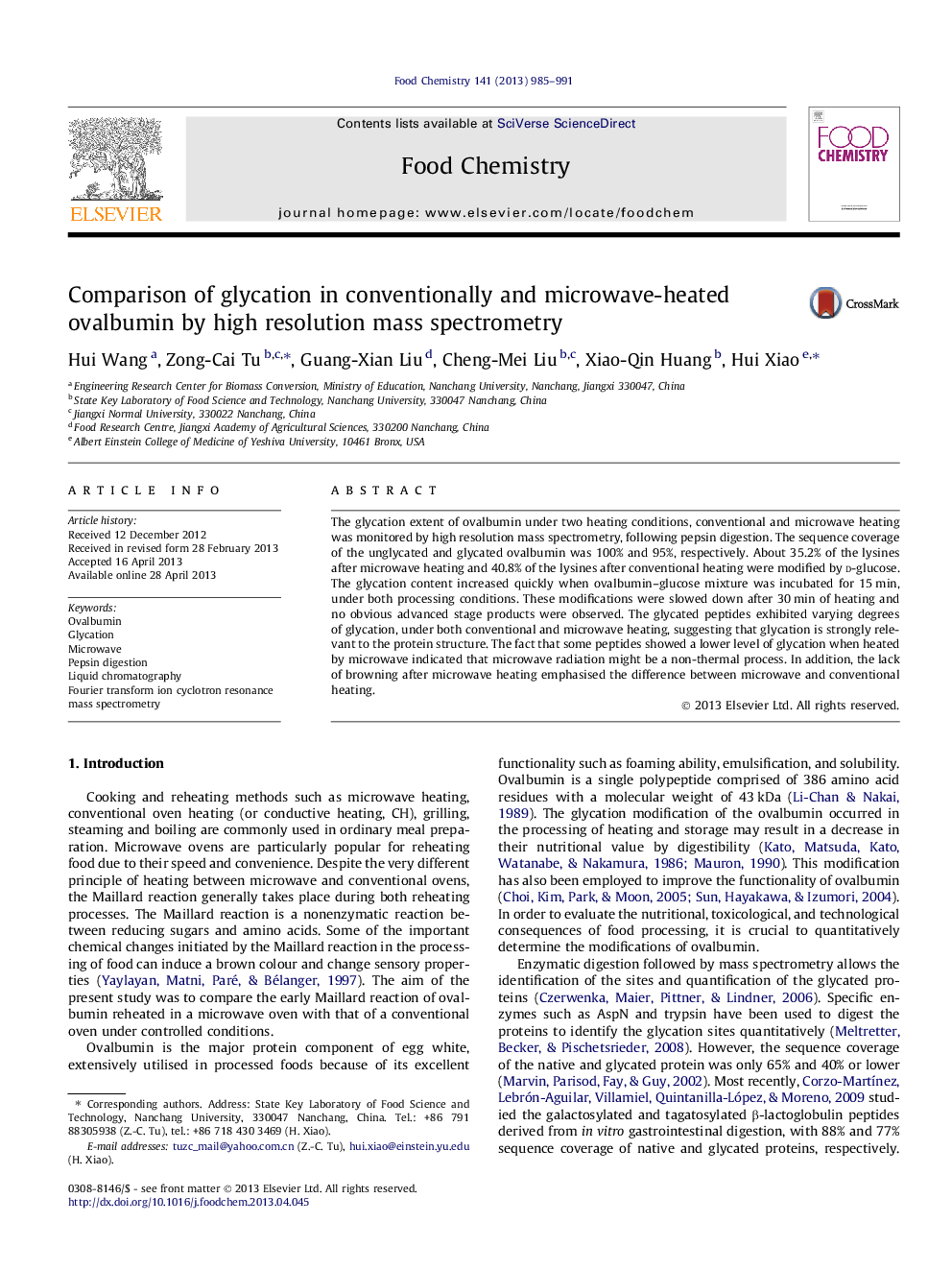| Article ID | Journal | Published Year | Pages | File Type |
|---|---|---|---|---|
| 1187127 | Food Chemistry | 2013 | 7 Pages |
•Mass spectrometry can be used to characterise the glycation sites of ovalbumin.•Both CH and MWH increased the glycation of preheated ovalbumin.•Browning appeared in CH treatment, but not in MWH treatment.•The glycated peptides exhibited diverse glycation level at different positions.•Some peptides showed lower level of glycation under MWH conditions than CH conditions.
The glycation extent of ovalbumin under two heating conditions, conventional and microwave heating was monitored by high resolution mass spectrometry, following pepsin digestion. The sequence coverage of the unglycated and glycated ovalbumin was 100% and 95%, respectively. About 35.2% of the lysines after microwave heating and 40.8% of the lysines after conventional heating were modified by d-glucose. The glycation content increased quickly when ovalbumin–glucose mixture was incubated for 15 min, under both processing conditions. These modifications were slowed down after 30 min of heating and no obvious advanced stage products were observed. The glycated peptides exhibited varying degrees of glycation, under both conventional and microwave heating, suggesting that glycation is strongly relevant to the protein structure. The fact that some peptides showed a lower level of glycation when heated by microwave indicated that microwave radiation might be a non-thermal process. In addition, the lack of browning after microwave heating emphasised the difference between microwave and conventional heating.
